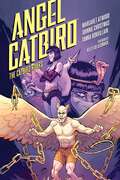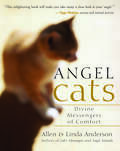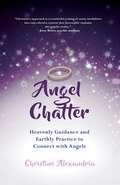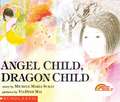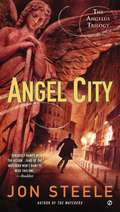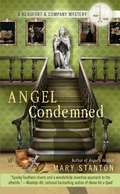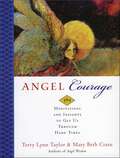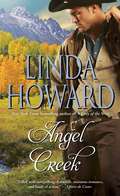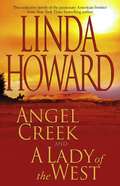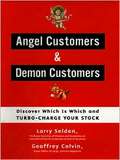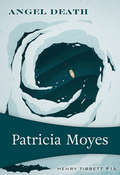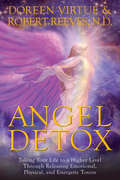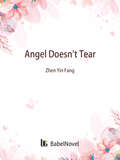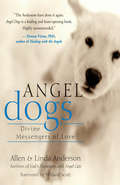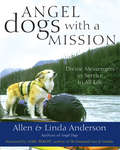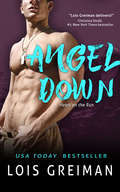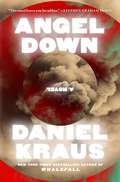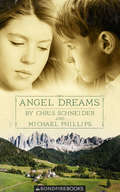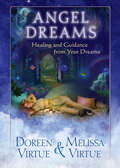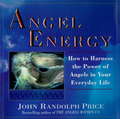- Table View
- List View
Angel Catbird Volume 3: The Catbird Roars (Angel Catbird #3)
by Margaret AtwoodThe Booker Prize-winning author of The Handmaid&’s Tale pens a conclusion to the dramatic, hilarious, and heartwarming Angel Catbird trilogy. It's all-out war in the madcap culmination of Angel Catbird's superhero saga. The evil Rat army is aiming for world domination, and only a ragtag gang of half-cats stands in their way. • Margaret Atwood is one of the most important living writers of our day. She has been recognized internationally for her work through awards and honorary degrees. • Atwood, whose work has been published in over thirty-five countries, is the author of more than forty books of fiction, poetry, and critical essays, and has won the Man Booker Prize, the Giller Prize, Premio Mondello, and more. • Atwood's The Blind Assassin was named one of Time magazine's 100 best English-language novels published since 1923. (On MaddAddam)"Atwood's prose miraculously balances humor, outrage and beauty. A simple description becomes both chilling and sublime."--The New York Times(On The Year of the Flood)"Atwood is funny and clever, such a good writer and real thinker."--The New York Times Book Review(On Oryx and Crake)"Atwood has long since established herself as one of the best writers in English today."--The Baltimore Sun (On The Edible Woman) "Margaret Atwood takes risks and wins."-Time(On The Blind Assassin)"Atwood is a poet." -The New Yorker"[A] scintillating wordsmith"--The Economist
Angel Cats: Divine Messengers of Comfort
by Linda Anderson Allen AndersonCat lovers, your secret is out. Now everyone will know why you’re crazy over cats! Read true stories about a feline friend helping a man get his “purr” back, a cat miraculously protecting and comforting a young girl during the Holocaust, a mother-daughter cat team serving as a woman’s heart specialists, sister cats coaxing a major league baseball player through a losing season, and a cat named Cuddles who writes her own advice column. Angel Cats proves that cats are as compassionate as they are curious.
Angel Chatter: Heavenly Guidance and Earthly Practice to Connect with Angels
by Christine AlexandriaWhatever faith we personally subscribe to, angels cross those boundaries and find their way into our lives. They remind us that we are not alone; that we are all guided and protected from another world. In her new informative, quirky, and practical guide, angel intuitive and award-winning author Christine Alexandria shares her profound gifts and vast knowledge of angels.Christine details how to strengthen our connection and become empowered by the fourteen archangels with whom she chats. Chapters include the therapeutic role of each angel, the chakra system and crystals affiliated with them, guided meditations, and more. Angel Chatter enables people from all traditions and faith backgrounds to access the wisdom, joy, and power of Christine’s “haloed gang.” The angels “will flock to assist us”—this is their simple yet solemn promise.
Angel Child, Dragon Child
by Michele M. SuratUt comes to America from Vietnam, but her mother must stay behind due to a shortage of funds. Ut's struggle to adjust to her new life is worsened by insensitive classmates. In a heartwarming ending, the students run a fair and raise the money for Ut's mother to join her family. Full color. A Notable Children's Trade Book in the Field of Social Studies; Booklist Editors' Choice.
Angel City
by Jon SteeleElectrifying from its explosive first scene to its unexpected and shocking conclusion, Angel City revisits the unforgettable characters from The Watchers to reveal more of the earthly--and otherworldy--mysteries of the Angelus trilogy. Katherine Taylor, ex-escort, and Jay Harper, private detective, no longer remember each other. They no longer remember the cosmic battle they fought against the Nephilim. In fact, the only memory of the events of their pasts takes the form of a child, Katherine's infant son, Max, who has, unbeknown to anyone, stirred the interest of the same vengeful spirits.... Meanwhile, from the shadows steps a defrocked priest named Astruc, whose face looks as if it has been clawed by some terrible beast and who hides his eyes behind blue lenses. He and his brilliant young ward have discovered something unfathomable in the catacombs under Paris--something that will confirm that "the time of the prophecy" is at hand.
Angel City: The Angelus Trilogy
by Jon SteeleElectrifying from its explosive first scene to its unexpected and shocking conclusion, Angel City revisits the unforgettable characters from The Watchers to reveal more of the earthly--and otherworldly--mysteries of the Angelus trilogy.Katherine Taylor, ex-escort, and Jay Harper, private detective, no longer remember each other. They no longer remember the cosmic battle they fought against the Nephilim. In fact, the only memory of the events of their pasts takes the form of a child, Katherine's infant son, Max, who has, unbeknown to anyone, stirred the interest of the same vengeful spirits....Meanwhile, from the shadows steps a defrocked priest named Astruc, whose face looks as if it has been clawed by some terrible beast and who hides his eyes behind blue lenses. He and his brilliant young ward have discovered something unfathomable in the catacombs under Paris--something that will confirm that "the time of the prophecy" is at hand.From the Paperback edition.
Angel Condemned
by Mary StantonRepresenting her Aunt Cissy's fiancé, museum curator Prosper White, in a case of fraud, attorney and celestial advocate Brianna Winston- Beaufort hopes to settle the matter out of court. But when Prosper is murdered and Cissy's arrested for the crime, Bree will have to solve the mystery of the Cross of Justinian-an artifact of interest in both Prosper's lawsuit and Bree's celestial case-to clear her aunt's name...
Angel Courage: 365 Meditations and Insights to Get Us Through Hard Times
by Mary Beth Crain Terry Lynn TaylorFrom the authors of the bestselling Angel Wisdom comes a book for everyone who wants to transform fear into courage and despair into hope. This delightful book shows us how to learn from our experiences and live every day with the grace and joy of the angels. With a year's worth of daily meditations, Angel Courage offers fresh wisdom for confronting life's difficulties, both large and small-from stress at work to quarrels and letdowns, guilt and regrets, grief and grudges. Each day's reading features a thought-provoking quote, ideas for reflection, exercises, and an inspiring angel blessing. The authors encourage us to learn to love ourselves no matter what mistakes we've made. "May you always make mistakes," they advise, "just not the same ones." The wisdom of the angels shows us how to laugh at ourselves, live in the moment, put our energy into productive activities, and follow the timing of our hearts by using our own angel courage to greet each day with authenticity and love.
Angel Creek (Western Ladies #2)
by Linda HowardDesire swept through the Colorado hills like wildfire, determined to claim both a woman&’s land—and her heart—in this unforgettable western romance from New York Times bestselling author Linda Howard, author of A Lady of the West.For five years after her father&’s death, Dee Swann has fiercely protected her Angel Creek homestead and her independence. Surrounded by the rugged beauty of the high country, she vowed that no one would ever take her land…or her freedom. But drought has left the valley desperate, and when Lucas Cochran returns to Colorado, he has his sights set on Angel Creek. The water running through Dee&’s property is the key to turning his Double C Ranch into the cattle empire he dreams of. Ruthless in ambition and determined to succeed, Lucas is ready to battle the stubborn, black-haired, green-eyed woman who stands in his way. Yet the passion that sparks when Dee and Lucas meet is as fierce as any fight over land. Drawn together by desire and divided by pride, they must face a dangerous path—where dreams could be destroyed, lives could be lost, or love could blaze as wild and untamed as the Colorado frontier itself.
Angel Creek and A Lady of the West (Western Ladies #1, #2)
by Linda HowardDesire and danger blaze like wildfire across the bold American West...in these scorching novels from "New York Times" bestselling author Linda Howard. ANGEL CREEK: After her father died, beautiful Dee Swann held on to her homestead in the Colorado hills, fiercely determined that no one would claim her land -- or her independence. Then ruthless, ambitious Lucas Cochran came to Angel Creek valley to challenge her on both counts....He needs the valley's cool waters to turn the drought-cursed high country into the cattle dynasty he craves. But as their fiery confrontation flares into a wild and unfettered passion, they are bound together in a dangerous destiny -- with much more than just frontier dreams at stake. ... A LADY OF THE WEST: Victoria Waverly was a noble daughter of the war-ruined South -- and wife in name only to a heartless Western rancher. Yet neither honor nor pride could quench her forbidden desire for hired gunman Jake Roper. His narrow gaze, hard as ice, hid tender emotions -- and he cursed his burning need for this graceful, innocent lady. For the blazing New Mexico territory called him to fight for the sweeping ranchland that was his birthright. On a mission to set right the past across the lawless land, the powerful cowboy and the aristocratic beauty would reach the heights of passion -- and step closer to the flames of destruction. ...
Angel Customers & Demon Customers
by Geoffrey Colvin Larry SeldenHow businesses can thrive by learning which customers are creating the most profit-and which are losing them money. One of the oldest myths in business is that every customer is a valuable customer. Even in the age of high-tech data collection, many businesses don't realize that some of their customers are deeply unprofitable, and that simply doing business with them is costing them money. In many places, it's typical that the top 20 percent of customers are generating almost all the profit while the bottom 20 percent are actually destroying value. Managers are missing tremendous opportunities if they are not aware which of their customers are truly profitable and which are not. According to Larry Selden and Geoff Colvin, there is a way to fix this problem: manage your business not as a collection of products and services but as a customer portfolio. Selden and Colvin show readers how to analyze customer data to understand how you can get the most out of your most critical customer segments. The authors reveal how some companies (such as Best Buy and Fidelity Investments) have already moved in this direction, and what customer-centric strategies are likely to become widespread in the coming years. For corporate leaders, middle managers, or small business owners, this book offers a breakthrough plan to delight their best customers and drive shareowner value.
Angel Dance: A Thriller
by Mary F. BealClassic lesbian thriller. The narrator, Kat, has been active in radical feminist politics long enough to know how to take care of herself--which is a good thing because her new job, protecting best-selling feminist author, Angel Stone, is going to test every one of her survival skills. Kat is tough, cool and disengaged, except for her passion for Angel Stone. Angel may be the most attractive woman she has ever known, but being around her can only spell danger.
Angel Death (Henry Tibbett #15)
by Patricia MoyesA devilishly complex mystery in a heavenly setting puts Emmy Tibbett in the role of sleuth—from &“the author who put the &‘who&’ back in whodunit&” (Chicago Daily News). Fans of Emmy Tibbett, have we got the book for you! Vacationing with friends in the Caribbean, Emmy and Henry meet a sprightly and delightful spinster who spins a yarn about a young woman lost at sea and then (perhaps) found again. The yarn gets yet more fascinating when the spinster herself disappears, and Henry—wry, unflappable Henry Tibbett of Scotland Yard—responds in a most uncharacteristic fashion. It&’s up to Emmy to untangle the clues, contending with drug smugglers on the one hand and an addled husband on the other. And did we mention the hurricanes? Emmy, of course, has resources to spare, so much so that we wish we could bring her back for a series of her very own.Praise for Patricia Moyes &“A new queen of crime . . . her name can be mentioned in the same breath as Agatha Christie and Ngaio Marsh.&” —Daily Herald &“The author has the authentic Agathian gift for mixing the ordinary and the sinister. Charmingly tea-tabled misdeeds.&” —Financial Times &“An excellent detective novel in the best British tradition. Superbly handled.&” —Columbus Dispatch&“Intricate plots, ingenious murders, and skillfully drawn, often hilarious, characters distinguish Patricia Moyes&’ writing.&” —Mystery Scene
Angel Detox: Taking Your Life To A Higher Level Through Releasing Emotional, Physical, And Energetic Toxins
by Doreen Virtue Robert ReevesDetoxing with the help of your angels is a gentle way to release impurities from your body, fatigue, and addictions. Doreen Virtue and naturopath Robert Reeves teach you simple steps to increase your energy and mental focus, banish bloating, feel and look more youthful, and regain your sense of personal power. Rid your life of physical toxins, as well as negative emotions and energies. <P><P>Angel Detox guides you step-by-step on how to detox your diet, lifestyle, and relationships. You'll learn how to reduce or eliminate cravings for unhealthful food and substances, feel motivated, and enjoy wellness in all areas of your life. This book also includes 7-Day Detox Plans for those wanting to quit smoking or drinking, or to flush out environmental pollution.
Angel Devotion Prayerbook
by Luis ValverdeA collection of a variety of prayers, litanies, chaplets, novenas, and other devotions to Saint Michael, Saint Gabriel, Saint Raphael, and Our Guardian Angel, compiled by Luis Valverde and accompanied by magnificent classical images of each of the four angels. These prayers are meant for both individual and groups and can be used in many situations and for many purposes.
Angel Doesn't Tear: Volume 1 (Volume 1 #1)
by ZhenyinfangHow many tears can we shed, how many times we all choose to cry for such and such things. We used to be so moved, so looking forward to things. It's all about choosing to cry over and over and choosing to give up. There are so many choices I have to make in my life, and all I can do is compromise.Meeting angels, meeting you, is the happiest thing in my many years. Because of your existence, I began to understand the meaning of life. I began to understand that not every time I left, every kind of separation should be full of tears, the original life is not so gray. Thank you for your presence in my life. I want to tell myself countless times that I love you.
Angel Dogs
by Linda Anderson Allen AndersonYou already know dogs are healers and loving companions, but did you know they also serve as matchmakers, lifesavers, prisoner rehabilitation specialists, parent trainers, hospital welcoming committees, advice columnists, and afterlife ambassadors? The true stories in Angel Dogs celebrate the deep and ancient connection between people and dogs and will inspire you to live up to the divine example of our canine companions.
Angel Dogs with a Mission
by Linda Anderson Allen AndersonThis fascinating book puts the spotlight on working dogs -- those heroic canines who have found ways to give back more than sloppy kisses and happy snuggles. The courageous dogs you will meet include: Keno, a yellow Lab, who rescued a lift operator buried in an avalanche. Kobi, a beloved and intelligent family pet with an exceptional sense of smell, who became one of the most famous cancer-sniffing dogs in the world. Tuffy, a Cavalier King Charles spaniel, who served as a grief counselor with Dr. Karla Rose during the horrible days following the Virginia Tech shootings. Abdul, the first service dog for people with mobility impairments, who was trained by Bonnie Bergin and Kerrill Knaus-Hardy and paved the way for people with disabilities to be independent. Anna, a German shepherd, who damaged her lungs searching through the wreckage at Ground Zero after 9/11 and inspired Sarah Atlas to found an assistance program for volunteer search-and-rescue dog handlers. Skidboot, the world-famous Texas blue heeler, who performed for Jay Leno, Oprah Winfrey, and David Letterman and on Animal Planet (with cowboy and entertainer David Hartwig) but started life as an abandoned puppy.
Angel Dogs: Divine Messengers of Love
by Linda Anderson Allen AndersonReading Angel Dogs: Divine Messengers of Love is like taking a walk in the park on a sunny day with your favorite dog. This wonderful collection of stories will bring back memories of the sweet, delightful, and touching times you have spent with your own loyal canine friends.
Angel Down (Heart On The Run Ser. #1)
by Lois GreimanA thrilling, sensual novel of romantic suspense from USA Today bestselling author, Lois Greiman.Gabriel Durrand's wingman, ex Army Ranger Linus Shepherd, has failed to return from a covert mission in the sweltering jungles of Colombia. Gabe is determined to make certain no man is left behind. Not on his watch. Recouping from an injury himself, he knows he can't bring Shep home alone and seeks an interpreter.When an unknown named Eddy Edwards is recommended for the assignment, Gabe hopes to meet him at Edwards’ neighborhood bar. Hours later, thinking this Eddy is a no-show, Gabe flirts with a girl-next-door beauty. Sparks fly, but during the ensuing romantic interlude, he realizes she’s heavily armed, deadly dangerous, and probably an enemy operative. Jennifer ‘Eddy’ Edwards has been on desk duty at the CIA for far too long and is ready to get her hands dirty, but when she meets sexy Gabriel Durrand at her local hangout, wires get crossed, hormones sizzle, and a battle erupts.Will this unlikely team save Shepherd or will they kill each other before ever arriving in South America?''Greiman's writing is warm, witty, and gently wise.” –Betina Krahn, New York Times bestselling author''Lois Greiman delivers.'' –Christina Dodd, New York Times bestselling author"Lois Greiman is a natural storyteller." –#1 New York Times bestseller, Victoria Alexander “If you enjoy Susan Wiggs and Kristin Hannah, you'll love Greiman's stories of redemption and renewal.”— New York Times bestselling author Kathleen Eagle
Angel Down: A Novel
by Daniel KrausThe critically acclaimed author of the &“crazily enjoyable&” (The New York Times) Whalefall returns with an immersive, cinematic novel about five World War I soldiers who stumble upon a fallen angel that could hold the key to ending the war.Private Cyril Bagger has managed to survive the unspeakable horrors of the Great War through his wits and deception, swindling fellow soldiers at every opportunity. But his survival instincts are put to the ultimate test when he and four other grunts are given a deadly mission: venture into the perilous No Man&’s Land to euthanize a wounded comrade. What they find amid the ruined battlefield, however, is not a man in need of mercy but a fallen angel, seemingly struck down by artillery fire. This celestial being may hold the key to ending the brutal conflict, but only if the soldiers can suppress their individual desires and work together. As jealousy, greed, and paranoia take hold, the group is torn apart by their inner demons, threatening to turn their angelic encounter into a descent into hell. Angel Down plunges you into the heart of World War I and weaves a polyphonic tale of survival, supernatural wonder, and moral conflict.
Angel Draws a Dinosaur
by Pavonis GironAfter an exciting day at the museum, Angel is inspired! With all the art supplies he can gather, he knows the dinosaur he draws will be perfect. But soon, fear and frustration take root - why can't he seem to draw exactly what he sees in his head? And even worse, what if he keeps making mistakes?This sophomore title from upcoming storyteller Pavonis Giron (A Rainbow in Brown) employs innovative art techniques to explore the joys of the creative process.
Angel Dreams
by Michael Phillips Chris Schneider&“A new story to immerse yourself in this Christmas season—a story that inspires your faith, beckons to your imagination, and tugs on your heartstrings.&” —Prairie Sky Book Reviews Reality and fantasy converge in this wonder-filled tale, beautifully crafted by authors Chris Schneider and Michael Phillips. A grieving World War II widow in search of a long-lost daughter finds herself drawn to a small Wyoming town. A crippled and mute orphan boy has a wondrous dream every Christmas Eve where he walks, talks, sees his mother, and meets a mysterious girl who becomes his best friend. &“Being filled with occurrences that could only come from Above, as well as Heavenly dreams and mysterious angel encounters, this story will continue to surprise readers until the very end. The setting of a small, post-WWII town, various secondary characters who add color and depth, and the back-and-forth timeline of events increases the one-of-a-kind feeling of the book, but in a special way makes it more endearing, as well.&”—Prairie Sky Book Reviews
Angel Dreams: Healing And Guidance From Your Dreams
by Doreen Virtue Melissa VirtueDreams are gateways to other worlds, times, and planes of existence. They are sacred portals through which we receive powerful messages from Source, often in the form of symbols brought to us by our dream guide and the angels. <P><P>In this book, Doreen Virtue and Melissa Virtue discuss where dreams come from, how to interpret them, what role angels play, and whom to call upon for guidance. You'll gain tools to enhance your dreamtime journeys, including techniques for creating your own dreams and improving your recall upon awakening. In addition, you'll learn to identify the different types of dreams by reading personal stories and interpretations that will help you decode your dream messages.
Angel Energy
by John Randolph PriceThe natural expression of the angels is Truth. If we deny the truth, we repress the energy of the angels. But when we fully accept the eternal verities of life, the angels go to work to bring everything up to the divine standard....Within each one of us dwell the twenty-two angels, centers of Living Energy that provide us with all we need to sustain us on our journey through life. They await only our readiness.However, the angels require our assistance to manifest changes in our lives. They are able to free us from disease and death, loneliness and unfulfillment, lack and limitation only when we free them. And so the author of the bestselling The Angels Within Us has written this book to help us set free the positive vibrations of these inner archetypes and their "nothing-is-impossible" energy.Through meditations, affirmations, exercises, dialogues with the twenty-two angels, and true stories of the miracles and transformations wrought by them, he helps us liberate the power of the Divine within so that we can: * Awaken our higher consciousness* Heal the past* Communicate with angels awake and dreaming* Find our right livelihood* Enjoy prosperity* Open ourselves to physical healing* Find fulfillment in our relationships* Surrender to unconditional love* And much moreOur angels are the very law of our being. This remarkable book helps us to connect and flow with their universal rhythm of wholeness, to become who and what we really are.From the Trade Paperback edition.
